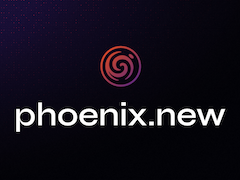By John Gruber

Resurrect your side projects with Phoenix.new, the AI app-builder from Fly.io.
Linked List: July 6, 2020
Monday, 6 July 2020
- Lunchbox by Sandwich ★
-
While I’m directing your attention to my friends at Sandwich, do not miss their shot-in-quarantine spot for Slack and the fascinating behind-the-scenes video documenting how they did it and created a system around the process:
It’s not easy to produce new live-action work these days that’s full of authentic character, on-message and on-brand, without sacrificing quality or relying on stock clips. But we’ve built new methods for doing just that, tastefully, repeatably and safely. With real lights, sound and cameras (not just iPhones).
(I will also add that all of our collaboration for the production and editing of The Talk Show Remote was done over Slack, and it was frictionless. I give Slack grief over the interface details of their client apps (especially Mac), but I complain because I care. You know the oft-cited adage that “Democracy is the worst form of government, except for all the others”? That’s what Slack is for remote collaboration.)
- How to Look and Sound Better in Video Meetings ★
-
Speaking of Adam Lisagor and making video calls look and sound better, Patrick Lucas Austin talked to him about just that for Time:
If you really want to go all out, adding a backlight can illuminate your hair and shoulders, separating you from your background in a pleasing way.
“It’s a matter of preference,” says Adam Lisagor, founder of video production company Sandwich, which makes commercials and other videos for companies like Slack, Starbucks, and Etsy, among others. “Some people would really prefer that every shadow is filled in … but I think, personally, I find a portrait more interesting if there’s some shadowing and shape to it.”
“There’s shadows in life, you know,” he adds.
That’s a reference, baby.
